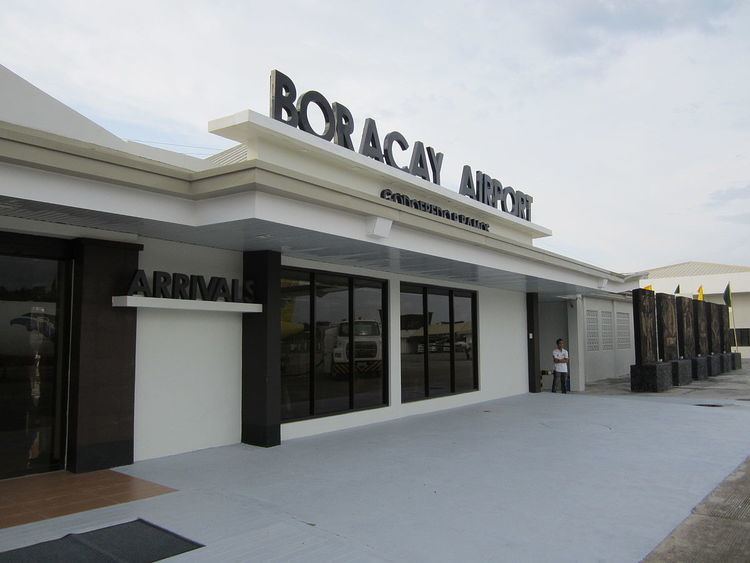Airport type Public Elevation AMSL 5 m / 16 ft Code MPH Yearly aircraft movements 23,868 | 06/24 1,800 Elevation 5 m Passenger count 623,545 | |
 | ||
Operator Transaire Development Holdings Corporation | ||
Take off from godofredo p ramos airport caticlan airport to ninoy aquino international airport
Godofredo P. Ramos Airport (Aklanon: Paeuparan it Godofredo P. Ramos, Hiligaynon: Hulugpaan sang Godofredo P. Ramos, Tagalog: Paliparang Godofredo P. Ramos) (IATA: MPH, ICAO: RPVE), also known as Caticlan Airport and recently, Boracay Airport by its developer Transaire, is an airport serving the general area of the municipality of Malay, located in the province of Aklan in the Philippines. It is one of the two gateways to Boracay, one of the Philippines' best-known tourist destinations. The airport is classified as a Class 2 Principal airport by the Civil Aviation Authority of the Philippines.
Contents
- Take off from godofredo p ramos airport caticlan airport to ninoy aquino international airport
- Cebu pacific s newest atr 72 600 landing in caticlan boracay godofredo p ramos airport
- Future development
- Incidents and accidents
- References
The airport is the seventh busiest airport in the Philippines and the third-busiest in the Western Visayas region, serving 761,961 passengers in 2008.
Since November 8, 2002, the airport has been named after the late Godofredo P. Ramos, a former member of Congress and a native of Malay. However, the name Caticlan Airport derives from its location in Barangay Caticlan in the municipality of Malay.
Cebu pacific s newest atr 72 600 landing in caticlan boracay godofredo p ramos airport
Future development
The National Economic and Development Authority has approved the expansion of Godofredo P. Ramos Airport, which will be undertaken by a private company called the Caticlan International Airport and Development Corporation. The P2.5-billion expansion of the airport entails two stages: the construction of a new passenger terminal in the first stage, costing some P2.1 billion, and the extension of the existing runway to 2,100 meters as well as upgrading airport equipment and the existing apron, costing some P360 million.
Solicited as a Build-Operate-Transfer project and financed by a 70-30 mixture of bank loan and private sector equity, around 25 percent of the allocated funds would be used to clear a mountain near the airport's proximity, while an additional 18 percent would be allocated for land reclamation to accommodate an extended runway.
The airport terminal was renovated in 2011 and was inaugurated on July 25, 2011 with President Benigno Aquino III leading the inauguration.
The upgrading works would enable the airport not only to support jet aircraft but also to serve international destinations. Despite earlier estimates of this working being completed in 2011 and later between 2012 and 2014, no visible progress has been made as of February 2013.
On January 1, 2014, it was reported that the San Miguel Corp. said it would complete the extension of Boracay Airport’s runway by the end of the year. The runway would be extended from 950 meters to 2,100 meters.
On November 18, 2016, flag carrier Philippine Airlines landed its first Airbus A320, which marked the opening of the extended runway. Cebu Pacific followed suit on November 22, 2016, landing its first A320 as flight 5J 899/900.
